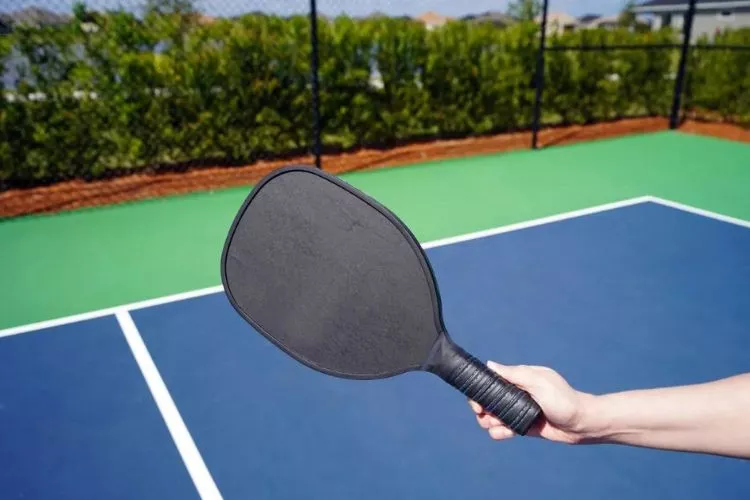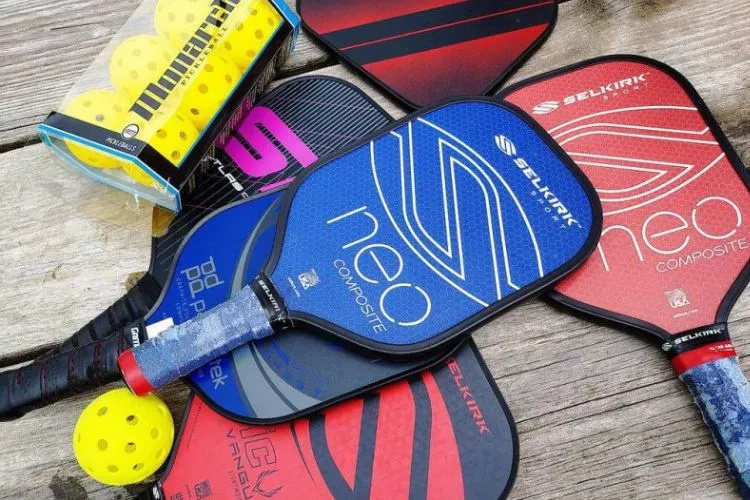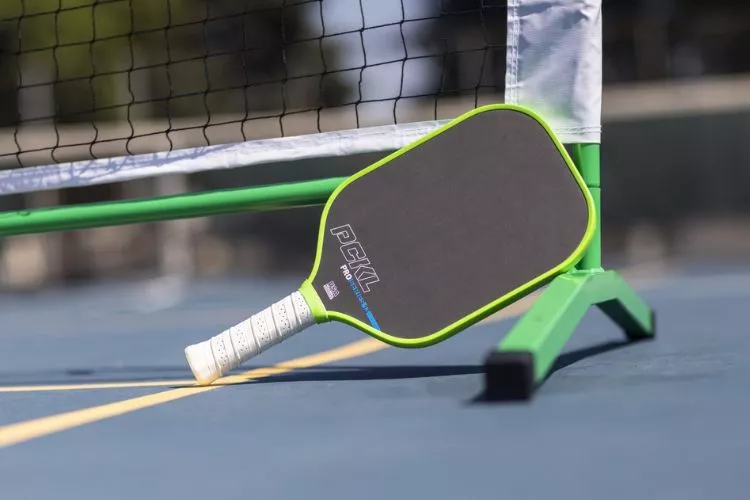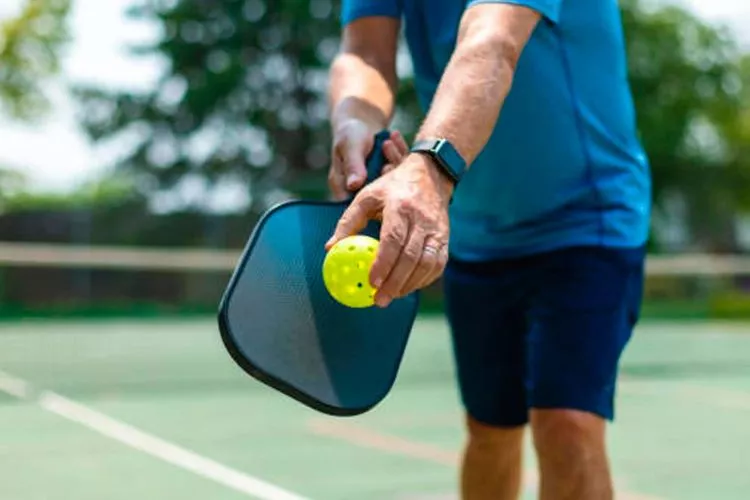Pickleball has gained tremendous popularity in recent years, leading to an increased demand for high-quality paddle equipment.
One of the issues players face is the delamination of their paddle.
Many players are not aware of what a delaminated pickleball paddle means, and the consequences of continuing to use it.

Understanding delamination and how to avoid it is crucial for players looking to maintain their gear and improve their game.
In this article, we will explore this paddle condition, its causes, and how to prevent it from happening.
What is a delaminated pickleball paddle?
A delaminated pickleball paddle is a condition that occurs when the layers of a paddle start to separate or come apart from each other.
Most paddles are made up of different layers of materials, such as foam cores, honeycomb cores, or carbon fiber layers.
These layers are bonded together using adhesives to create a durable, sturdy paddle.
However, with frequent use, the bonding between the layers can weaken, causing the layers to separate from each other.
This can result in a loss of power, control, and precision while playing. As the paddle becomes delaminated, it may also produce a hollow sound when striking the ball.
Sure, here is a detailed explanation on why delamination happens in pickleball paddles.
Causes of Delamination in Pickleball Paddles
Delamination in pickleball paddles typically happens due to two main causes which are related to the materials and process used in making the paddle: the bonding process and the core material.
Let’s delve deeper into each of these causes.

Bonding Process
The manufacturing process of the paddles involves adhering an outer layer of material to a core layer. This is often accomplished using an adhesive or a heat process.
When the bonding process is not adequate, it can lead to delamination. This is especially the case when the adhesive used is of poor quality, or if there is a lack of sufficient pressure during the heat process.
In both situations, the bonding between the core and the outer layer can become weak, leading to potential delamination.
Core Material
The core material used in the paddle also plays a significant role in the occurrence of delamination. Pickleball paddles are often made with a core of polymer, aluminum, or Nomex honeycomb, which are each covered by an outer layer of composite material.
The use of inferior or inadequate core materials can result in a lack of proper support for the outer composite layers, leading to the chance of delamination.
The Role of Bending Stiffness
Bending stiffness refers to the amount of resistance provided by a paddle against deformation when a load is applied.
In a well-bonded pickleball paddle, the high bending stiffness of the outer layers, combined with the appropriate support of the core material, ensures the overall stability of the paddle.
However, with delamination, the bonding between the core and the outer layers is compromised, reducing the bending stiffness in the inner area of the paddle face.
On the other hand, the outer edge of the paddle still retains its high bending stiffness, as it’s less affected by the delamination process.
Impact of Delamination on Paddle Performance
In a game where precision, speed, and control are crucial, the reduced bending stiffness due to delamination can significantly alter the paddle’s performance.
The unequal distribution of stiffness across the paddle surface results in inconsistent strikes and unpredictability during a game.

This is why maintaining the structural integrity of a pickleball paddle and avoiding delamination is critical to the player’s performance.
In conclusion, delamination in pickleball paddles is affected by the bonding process, the quality of the core material, and results in a change in the bending stiffness of the paddle.
It offers an inconsistent playing experience and thereby serves as a significant disruption for pickleball players.
Thermoformed Paddles and Delamination
Delamination is not a phenomenon that affects all types of pickleball paddles equally. Specific types, particularly those produced using certain manufacturing techniques, are more likely to experience this issue.
Early Generation Thermoformed Paddles
One such type of paddle prone to delamination is the early-generation thermoformed paddles, specifically those produced around late 2022 and early 2023.
Thermoforming is a process in which heat is used to shape plastic or composite materials, including the popular paddle faces of composite pickleball paddles. However, the critical issue arises in how this process is carried out.
Manufacturing Process of Thermoformed Paddles
To create a thermoformed paddle, heat is applied to a sheet of plastic or composite material, making it pliable. This heated material is then shaped to create the paddle face.
For effective performance, this outer layer needs to be securely adhered to the paddle’s core. The bond created in this process is often where the problem of delamination originates.
Causes of Delamination in Thermoformed Paddles
In early thermoforming processes, the heat and pressure applied during the manufacturing could sometimes result in an inadequate bond between the outer layer and the core.
In these early-generation thermoformed paddles, therefore, the risk of separation, or delamination, becomes significantly higher over time, especially under the impact of rigorous playing conditions.
Moreover, the type of adhesive used in the bonding process could also factor into the potential for delamination. If an inferior adhesive was used or applied incorrectly, it could fail over time and cause delamination.
Impact on Game Play
When an early-generation thermoformed pickleball paddle delaminates, it can massively impact a player’s game.
The resulting inconsistencies on the paddle face can affect power and control, leading to unexpected bounces and reduced performance during plays.
The susceptibility of certain types of paddles to delamination, particularly early-generation thermoformed paddles, underscores the importance of advancements in manufacturing techniques and materials.
As paddle technology continues to improve, issues like delamination will likely become less prevalent, improving the durability and reliability of pickleball paddles.
Prevention of Delamination in Pickleball Paddles
Preventing delamination in pickleball paddles primarily involves proper maintenance and care. Here are some essential considerations:

Paddle Storage and Handling
One of the easiest ways to prevent delamination is by properly storing your paddle. Avoid leaving it in places with fluctuating temperatures like a car trunk, as it can cause the materials to weaken and eventually separate.
Similarly, it’s crucial to handle the paddle carefully and avoid impacts or drops that could cause unseen damage.
Select High-Quality Paddles
Investing in high-quality paddles reduces the risk of delamination. Quality paddles are typically made with superior adhesives that strongly bond the different layers, reducing the chances of separation.
Ensure you choose paddles from reliable manufacturers and avoid those that have reviews indicating delamination issues.
Repair of Delaminated Pickleball Paddles
Despite your best preventative efforts, if your paddle does become delaminated, it may be possible to repair it. Here’s how:

Using Epoxy
Epoxy resin is commonly used to repair delaminated paddles. You’ll need to inject the epoxy into the affected area, making sure it fills the space created by the delamination.
Once the epoxy is applied, you will need to apply pressure to the area to ensure a good bond and then allow it to dry.
Repair Stitching and Sealants
For larger areas of delamination, repair stitching might be necessary. This involved drilling small holes along either side of the delaminated area and stitching the two layers back together using a strong thread or thin wire.
The holes and stitching should then be sealed off with a paddle-compatible sealant.
Please note that these repair methods might affect the performance of your paddle or void the manufacturer’s warranty. In some cases, it might be more cost-effective to replace the paddle altogether.
Regular Maintenance and Care
Regular examination of your paddle for early signs of wear and damage is crucial. This will help you catch any potential delamination early, affording a chance to repair it before it worsens.
In conclusion, while advance in the manufacture of paddles might slowly phase out the problem of delamination, knowing how to prevent and repair this issue can prove valuable for pickleball players.

Proper maintenance and care of your paddle is key to extending its life and getting the most out of your pickleball games.
Conclusion:
A delaminated pickleball paddle is one in which the outer layer separates from the paddle’s core – an issue predominantly caused by inadequate bonding during manufacture or choice of poor-quality core material.
Delamination threatens the performance and lifespan of the paddle, due to changes in its bending stiffness, therefore, understanding its causes and knowing how to prevent and possibly repair it is crucial.
Emphasizing on proper paddle maintenance and care can ensure a consistent, high-level gameplay experience for pickleball enthusiasts.

Pickleball’s more than a game to me—it’s a passion. I write, sharing its highs and lows, the thrills and the lessons. Some tales might draw you to the court, while others give a hint of the game’s magic. So, curious about my journey? Ready to dive deep into the world of pickleball with me? Let’s go.
